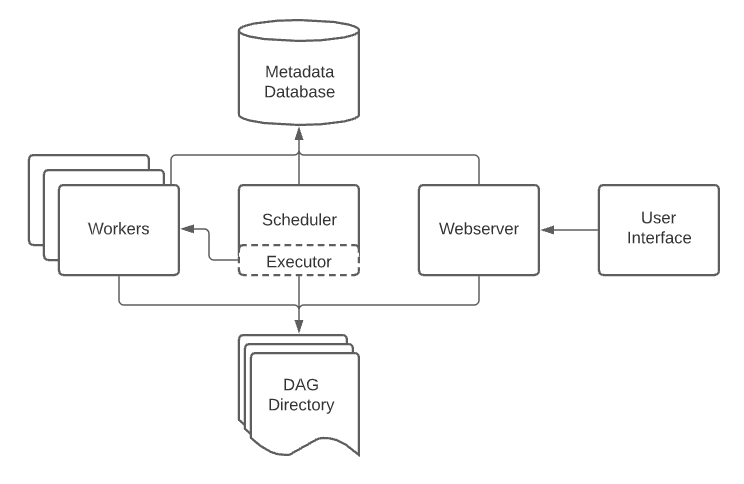Architecture Overview¶
Airflow is a platform that lets you build and run workflows. A workflow is represented as a DAG (a Directed
Acyclic Graph), and contains individual pieces of work called Tasks, arranged with dependencies and data flows taken
into account.
An Airflow installation generally consists of the following components:
- A
scheduler, which handles both triggering scheduled workflows, and submitting Tasks to the executor to run. - An
executor, which handles running tasks. In the default Airflow installation, this runs everything inside the scheduler, but most production-suitable executors actually push task execution out toworkers. - A
webserver, which presents a handy user interface to inspect, trigger and debug the behaviour of DAGs and tasks. - A folder of DAG files, read by the scheduler and executor (and any workers the executor has)
- A
metadata database, used by the scheduler, executor and webserver to store state.
